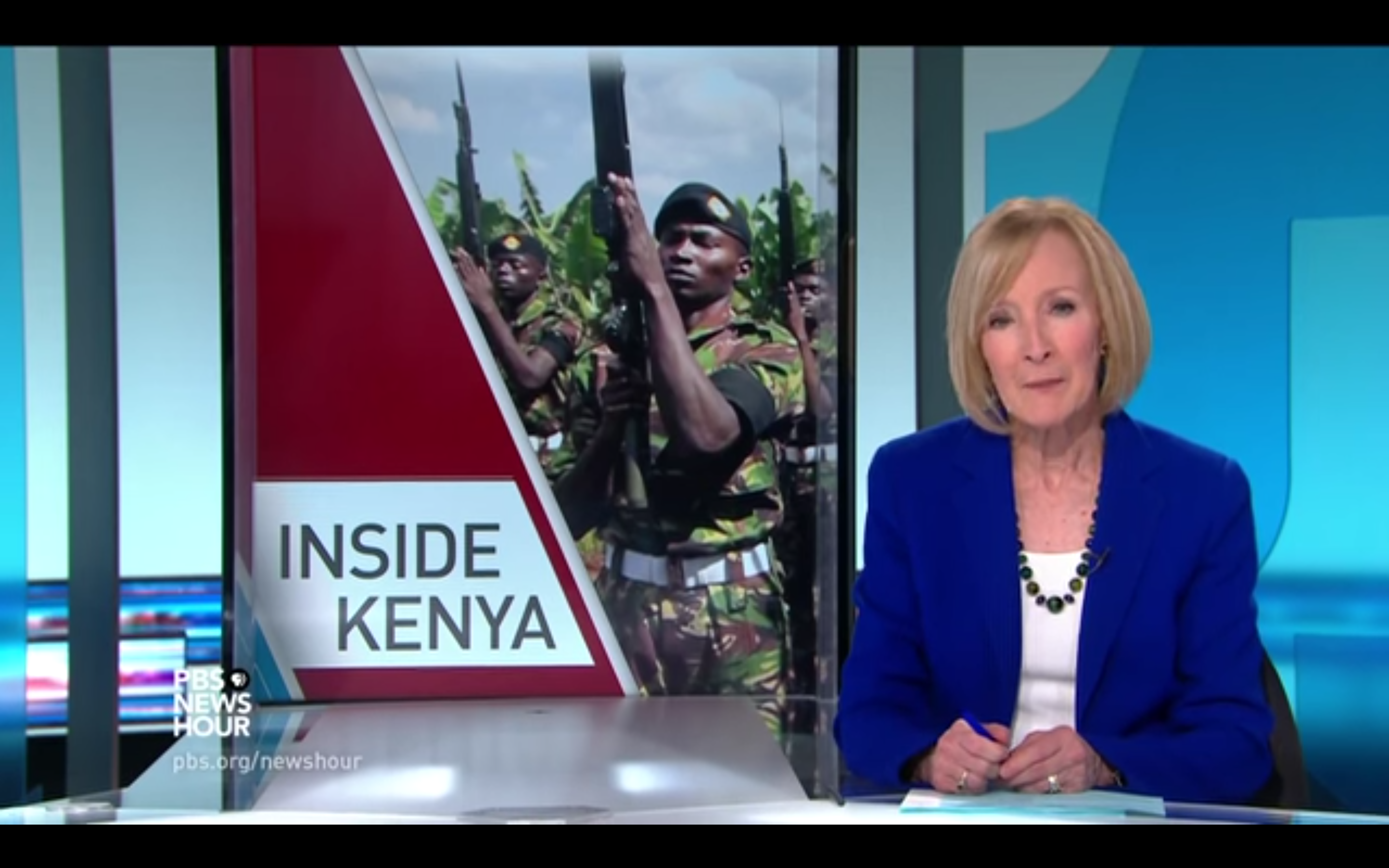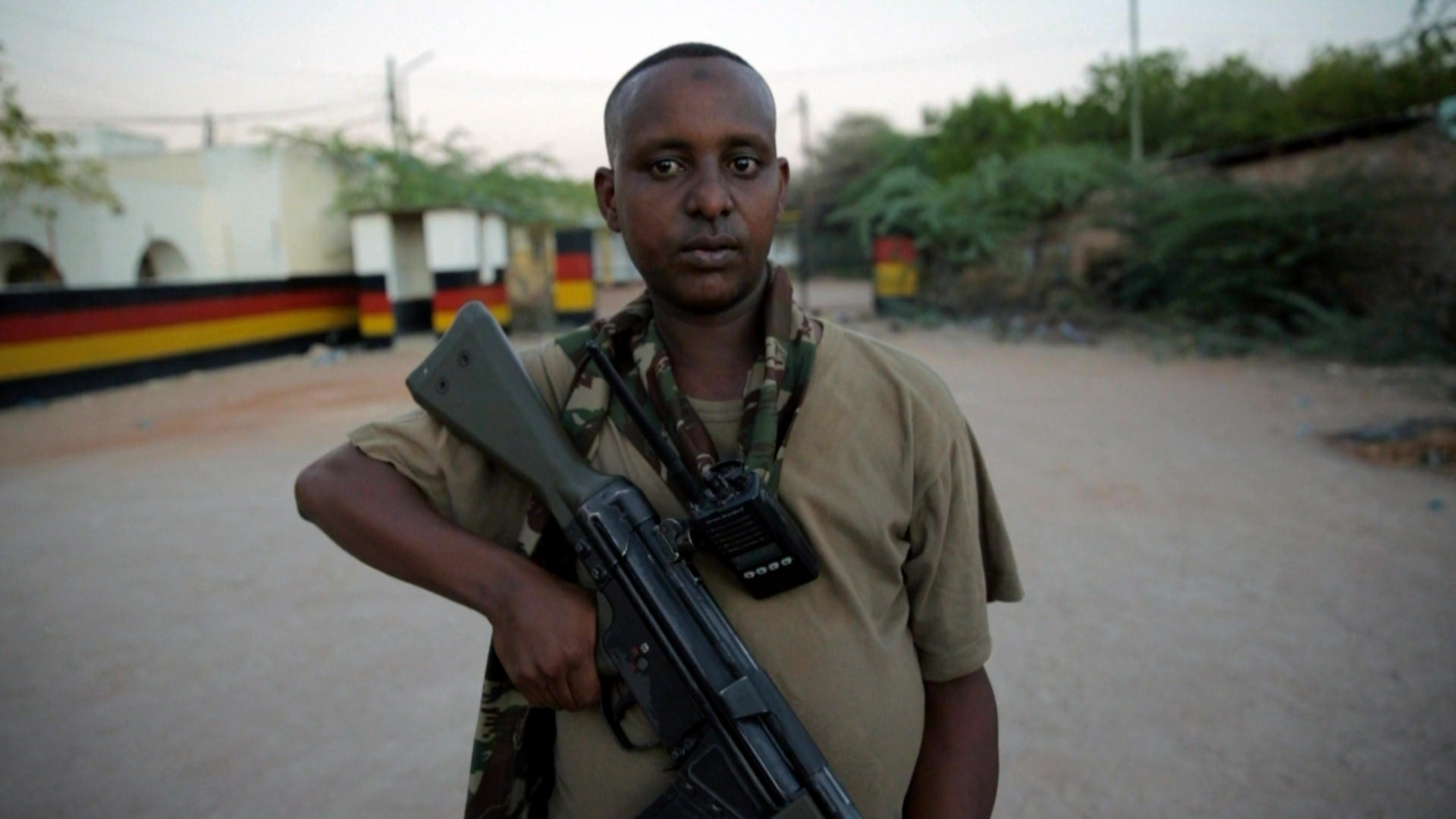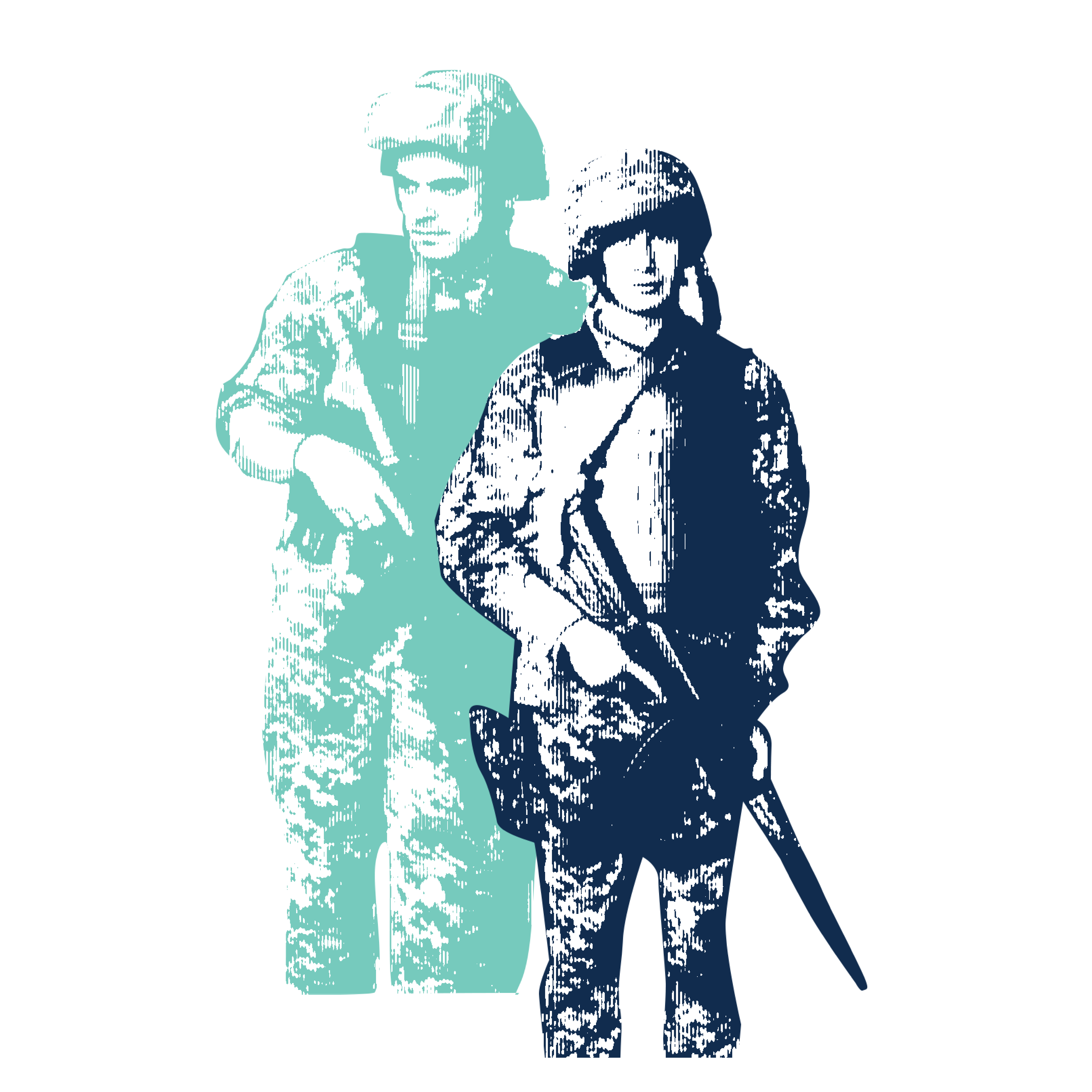
JUDY WOODRUFF: But first: The U.S. is stepping up its campaign in Somalia against the terror group Al Shabaab, but that fight will not be won unless U.S. allies like Kenya and others intensify their efforts.
In January, there was a big setback to the mission, when more than 100 Kenyan troops died on their base in Somalia, a result of Al Shabaab's deadliest attack ever.
Last week, the group released a video of the operation. Now, with the help of the Pulitzer Center on Crisis Reporting, special correspondent Nick Schifrin looks at how Al Shabaab is winning both on the ground and over the airwaves.
A warning: Some viewers may find images in this story disturbing.
NICK SCHIFRIN: It is 48 minutes of violence, video game graphics, and visions of victory. The video is pure propaganda, full of fancy editing and half-truths. But it's effective at portraying Shabaab as strong and Kenya as weak.
What do you see when you watch this video?
CLINT WATTS, Former FBI Investigator: The first thing that you notice is, number one, how many people they have moving against this defensive position.
NICK SCHIFRIN: Clint Watts is a former U.S. soldier and FBI investigator. He's now a Shabaab expert.
CLINT WATTS: So, Kenyan forces just getting annihilated here by what is a seemingly ragtag group that was put together on short notice.
If you were with a competent force, just like you see here in this video with this vehicle running away, they should be able to stand right there and eliminate that entire force moving through the open.
NICK SCHIFRIN: It was the deadliest day in Kenyan military history.
They were vulnerable, not only because of poor defenses, but also because they haven't been on the offense.
CLINT WATTS: Any troops that are out there just parked as sort of a occupy and hope that peace will come are always going to be vulnerable.
NICK SCHIFRIN: African Union troops pushed Shabaab out of its strongholds five years ago. Since then, the troops have mostly remained in their bases.
That's allowed Shabaab to launch daily attacks and resurge.
LT. COL. EMMANUEL CHIRCHIR, Kenyan Army: That particular pause gave Al Shabaab to regain its balance.
NICK SCHIFRIN: Kenyan Lieutenant Colonel Emmanuel Chirchir was the chief spokesman against Shabaab. In the El Adde attack, he lost his brother Dan.
LT. COL. EMMANUEL CHIRCHIR: I hear some people believe that, when they die, they will meet virgins. That's what Al Shabaab believe. When Dan died, he met God.
NICK SCHIFRIN: Dan Chirchir died instantly. His funeral was held with military honors.
Shabaab has attacked bases before, but never with a car bomb that exploded inside a base for African Union troops, known as AMISOM.
LT. COL. EMMANUEL CHIRCHIR: It's a new experience, a new challenge that AMISOM forces are facing as a whole.
NICK SCHIFRIN: In response to Shabaab's resurgence, the U.S. military has dramatically's escalated its own attacks. In just the last seven weeks, U.S. airstrikes and U.S.-backed ground assaults have killed at least 190 Al Shabaab fighters, more than the total killed in the previous nine years.
CLINT WATTS: The Kenyans have taken a huge hit. You have got to somehow back them up and give them some reason to believe that they're going to be OK.
NICK SCHIFRIN: The U.S. now calls these attacks self-defense, because they target Shabaab fighters massing and presumably preparing for an attack.
General David Rodriguez is the U.S.' top soldier in Africa.
GEN. DAVID RODRIGUEZ, U.S. Africa Command: They disperse and attack and focus all that energy on one of the forward operation bases.
NICK SCHIFRIN: But the previous decade's worth of American strikes couldn't prevent this horror. In fact, the Al Shabaab brigade that carried out the attack is named after a Kenyan Al Shabaab commander killed by a U.S. drone in 2009.
In Somalia, were you winning most of the battles?
This man, whom we granted anonymity, is a former member of the same unit. He says Al Shabaab would be losing if African forces were more aggressive.
FORMER AL SHABAAB FIGHTER (through interpreter): Most of the time, we would look at the enemy's strength and leave. If a town was taken from us, it was tough to retake it, since they had aerial support.
NICK SCHIFRIN: Which is why the U.S. is pushing and training African troops to attack more.
LT. COL. EMMANUEL CHIRCHIR: So, it becomes a kind of competition in ensuring that you are ahead of the enemy. And if you are ahead of the enemy, you will reduce this kind of — any kind of threat.
NICK SCHIFRIN: But the video's threat is also as a recruitment tool to lure susceptible young men.
CLINT WATTS: You can watch this as a potential recruit and be like, I am going to be this guy on the battlefield. This is something that excites me. And I'm with my brothers out here. And it's violent and they're successful. So I want to be part of a winning effort.
NICK SCHIFRIN: Did you like the feeling of fighting with Al Shabaab against the African forces?
FORMER AL SHABAAB FIGHTER (through interpreter): It was good. We were like brothers. In the beginning, my morale was high.
NICK SCHIFRIN: Shabaab reinforces that by forcing Kenyan soldiers to portray themselves as the losers.
FORMER AL SHABAAB FIGHTER (through intepreter): We were attacked and overrun by the Muslims. They have defeated us.
NICK SCHIFRIN: In response, the African Union released its own video showing the El Adde village recaptured.
NAKIBUS LAKARA, AMISOM: AMISOM is not a peacekeeping mission. AMISOM is a war-fighting mission. So, from deployment, you know you have come to fight.
NICK SCHIFRIN: But Shabaab uses that same video to mock Kenya's public relations attempts.
NAKIBUS LAKARA: So, from deployment, you know you have come to fight.
MAN: We will fight them deep in their hideouts.
NICK SCHIFRIN: Pointing out Kenya's refusal, even to this day, to release a death toll.
Even Kenyans who support the troops make the same exact critique.
BONIFACE MWANGI, Anti-Corruption Campaigner: Right now, what we have now is propaganda from Al Shabaab. What we need is the truth from the government.
NICK SCHIFRIN: Boniface Mwangi is an anti-corruption campaigner. He held a vigil for the El Adde victims, but criticized the government for withholding details about how they died.
BONIFACE MWANGI: We are celebrating the people who died, and asking the generals and the commander in chief, what really happened in Somalia? Tell us the truth.
NICK SCHIFRIN: As long as Kenya declines to tell its side of the story, Al Shabaab wins the battle and the propaganda war.








